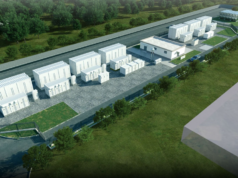CLARK FREEPORT – The Bases Conversion Development Authority (BCDA) is determined to establish here its proposed Green City as “a business case for a new Philippine metropolis” amid land and air traffic congestion, as well as worsening climate change-related flooding in Metro Manila.
Also citing shortage of areas for business expansion in the Calabarzon region, BCDA President- CEO Arnel Paciano Casanova thus said that the flow of investments would inevitably be towards this former US military base.
He stressed that “there is a need for new metropolitan area to sustain annual economic growth of 7.8 percent.”
“Clark is the next inevitable catchment area for new investments in manufacturing. The Philippine Export Processing Authority (PEZA) has reported that almost 90 percent of its administered special economic zones in Calabarzon are fully leased out and running out of expansion area,” Casanova told government and private sector stakeholders here in a recent summit on Clark.
He cited “current requirements for new manufacturing space of at least 2,000 hectares,” adding that “tightening supply of manufacturing and office space (in Metro Manila and Calabarzon) points to the movement of new investments north of Metro Manila.”
Casanova noted that while the 2,400 hectares of space at the main Clark Freeport are also almost all leased out to investors and that only about 145 hectares of scattered lands have remained available, some 35,000 hectares of the so-called Sacobia area north of this freeport have remained largely untapped.
He said the BCDA plans to establish a Green City in the area, similar to the Bonifacio Global City which his agency established over a 25-year period. Casanova said the proposed Green City was “a business case for a new Philippine metropolis.”
He presented during the summit a hazard map indicating flooding threats in wide areas of Metro Manila, as opposed to Clark’s at least 120-meter elevation above sea level. “Also, the nearest fault to Clark is far in Zambales, whereas there are faults in both eastern and western part of Metro Manila,” he said.
He cited projectionsthat by 2030, Central Luzon where Clark is located would have a population of about 19 million “or about 14 percent of the national (population) to create the second biggest metropolis in the Philippines.”
Casanova also said that the economic potential of Central Luzon could be gleaned from the region’s overseas
Filipino workers (OFW) population which, he noted, was second biggest in the country. “OFW families exhibit high disposable income, powering the residential and consumer goods market,” he added.
“Central Luzon gross national product (GDP) of $39.2 billion or 0.1 percent of the national $431 billion is expected to surpass Calabarzon in the next 10 years,” he added. Casanova said the Green City would be necessary amid “urbanization trend in the Philippines.
“Today more than 49 percent or one out of two Filipinos are living in urban areas. By 2030, three out of four Filipinos will be urban dwellers. Since cities serve as the main engine of growth of countries worldwide, there is a need for new metropolitan area to sustain annual economic growth of 7.8 percent,” he said.
Casanova said that Green City would take advantage of the continuing growth in Business Processing Outsourcing (BPO) economy which, he noted has been growing at “a vibrant 20 percent annual rate with expected employment of 1.3 million and revenues of $25 billion by 2016, contributing 10 percent of the economy.”
‘”The Philippines remains the cheapest destination for BPO market in Asia. Pampanga is emerging as the third largest BPO market in the country with the removal of PEZA incentives for new Information Technology perks in Metro Manila and in Cebu, Clark will further reinforce its attractiveness for new IT facilities,” he noted.
He also cited the role of Clark International Airport (CIA) here in national development, noting it is now the country’s sixth busiest airport, after the Ninoy Aquino International Airport (NAIA) in Manila and the international airports in Cebu, Davao, Iloilo, and Cagayan de Oro.
“Clark will hit two million passengers in 2013 and will beat Davao in 2014. It will overtake Cebu-Mactan airport as second in seven years, Manila’s NAIA will reach limit in five years and Clark will overtake NAIA by 2025,” he noted.
He said the Green City would have five districts. The priorities for the districts would include government offices, a central business district for residences, BPO offices and light manufacturing, an area with facilities for schools and universities, a site for agri-forestry research and development centers, agro-fishery farms, and wellness and eco-tourism centers




